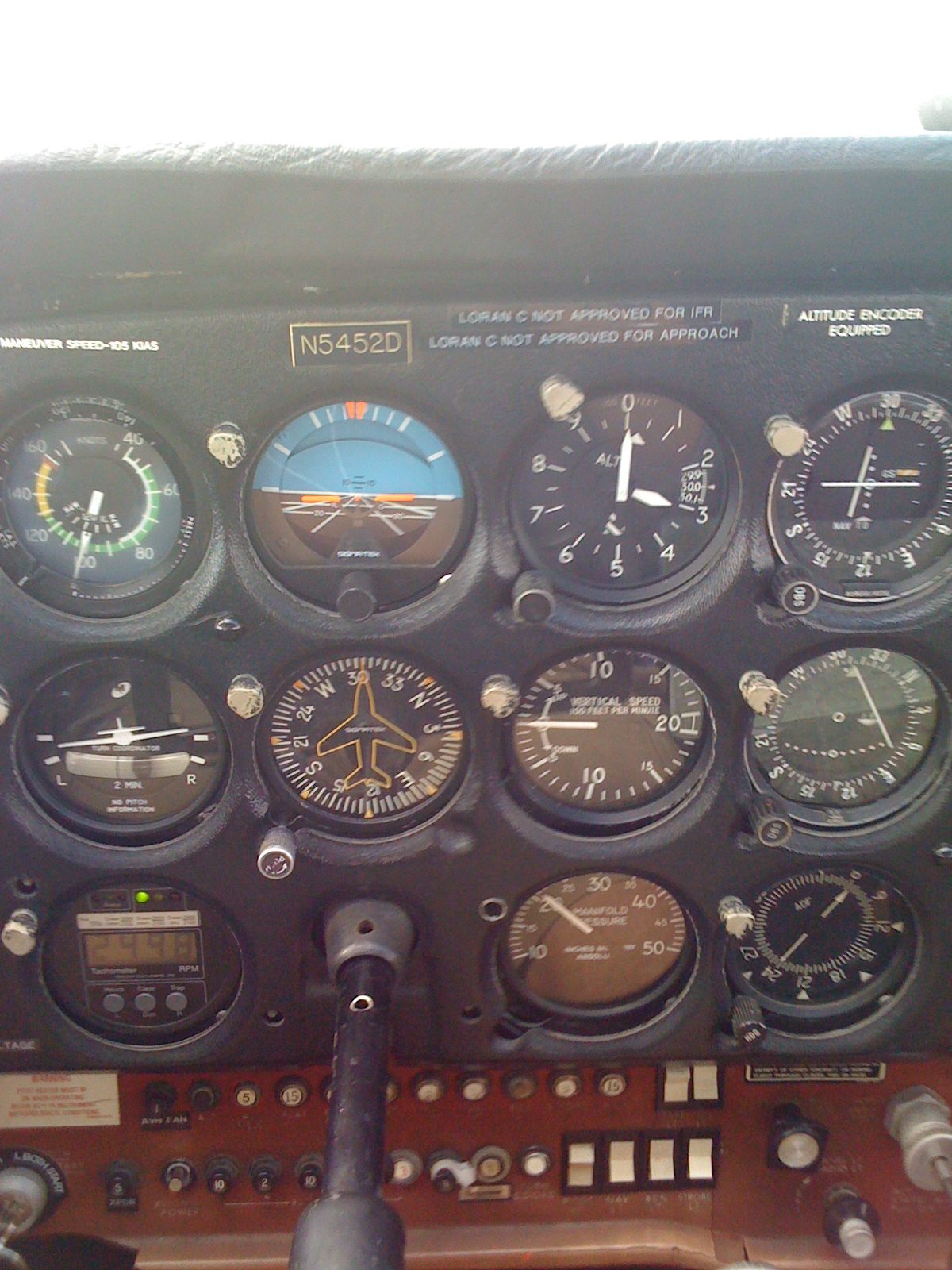|
Text Display
A text display is an electronic alphanumeric display device that is mainly or only capable of showing text, or extremely limited graphic characters. This includes electromechanical split-flap displays, vane displays, and flip-disc displays; all-electronic liquid-crystal displays, incandescent eggcrate displays, LED displays, and vacuum fluorescent displays; and even electric nixie tubes. There are several ways to form text for display. A segment display uses lines, while a dot-matrix display uses a grid of dots, and both of these are seen in LCD, LED, VFD, and vane/disc types. For split-flap displays, the characters or words are pre-printed, and for nixie tubes the shapes are also pre-formed. In any case, the display elements are controlled by electronics which activate them in the correct physical and temporal sequence to show the desired information. Text displays are used in everything from clocks (clock radios, wristwatches) to variable-message signs ( departure board ... [...More Info...] [...Related Items...] OR: [Wikipedia] [Google] [Baidu] |
Alphanumeric
Alphanumericals or alphanumeric characters are a combination of alphabetical and numerical characters. More specifically, they are the collection of Latin letters and Arabic digits. An alphanumeric code is an identifier made of alphanumeric characters. Merriam-Webster suggests that the term "alphanumeric" may often additionally refer to other symbols, such as punctuation and mathematical symbols. In the POSIX/C locale, there are either 36 (A–Z and 0–9, case insensitive) or 62 (A–Z, a–z and 0–9, case-sensitive) alphanumeric characters. Subsets of alphanumeric used in human interfaces When a string of mixed alphabets and numerals is presented for human interpretation, ambiguities arise. The most obvious is the similarity of the letters I, O and Q to the numbers 1 and 0. Therefore, depending on the application, various subsets of the alphanumeric were adopted to avoid misinterpretation by humans. In passenger aircraft, aircraft seat maps and seats were designated b ... [...More Info...] [...Related Items...] OR: [Wikipedia] [Google] [Baidu] |
Clock Radio
An alarm clock (or sometimes just an alarm) is a clock that is designed to alert an individual or group of individuals at a specified time. The primary function of these clocks is to awaken people from their night's sleep or short naps; they are sometimes used for other reminders as well. Most use sound; some use light or vibration. Some have sensors to identify when a person is in a light stage of sleep, in order to avoid waking someone who is deeply asleep, which causes tiredness, even if the person has had adequate sleep. To turn off the sound or light, a button or handle on the clock is pressed; most clocks automatically turn off the alarm if left unattended long enough. A classic analog alarm clock has an extra hand or inset dial that is used to specify the time at which the alarm will ring. Alarm clocks are also used in mobile phones, watches, and computers. Many alarm clocks have radio receivers that can be set to start playing at specified times, and are known as ''clock ... [...More Info...] [...Related Items...] OR: [Wikipedia] [Google] [Baidu] |
Calculator
An electronic calculator is typically a portable electronic device used to perform calculations, ranging from basic arithmetic to complex mathematics. The first solid-state electronic calculator was created in the early 1960s. Pocket-sized devices became available in the 1970s, especially after the Intel 4004, the first microprocessor, was developed by Intel for the Japanese calculator company Busicom. Modern electronic calculators vary from cheap, give-away, credit-card-sized models to sturdy desktop models with built-in printers. They became popular in the mid-1970s as the incorporation of integrated circuits reduced their size and cost. By the end of that decade, prices had dropped to the point where a basic calculator was affordable to most and they became common in schools. Computer operating systems as far back as early Unix have included interactive calculator programs such as dc and hoc, and interactive BASIC could be used to do calculations on most 1970s a ... [...More Info...] [...Related Items...] OR: [Wikipedia] [Google] [Baidu] |
Signage
Signage is the design or use of signs and symbols to communicate a message. A signage also means signs ''collectively'' or being considered as a group. The term ''signage'' is documented to have been popularized in 1975 to 1980. Signs are any kind of visual graphics created to display information to a particular audience. This is typically manifested in the form of wayfinding information in places such as streets or on the inside and outside buildings. Signs vary in form and size based on location and intent, from more expansive banners, billboards, and murals, to smaller street signs, street name signs, sandwich boards and lawn signs. Newer signs may also use digital or electronic displays. The main purpose of signs is to communicate, to convey information designed to assist the receiver with decision-making based on the information provided. Alternatively, promotional signage may be designed to persuade receivers of the merits of a given product or service. Signage is d ... [...More Info...] [...Related Items...] OR: [Wikipedia] [Google] [Baidu] |
Flight Instruments
Flight instruments are the instruments in the cockpit of an aircraft that provide the pilot with data about the flight situation of that aircraft, such as altitude, airspeed, vertical speed, heading and much more other crucial information in flight. They improve safety by allowing the pilot to fly the aircraft in level flight, and make turns, without a reference outside the aircraft such as the horizon. Visual flight rules (VFR) require an airspeed indicator, an altimeter, and a compass or other suitable magnetic direction indicator. Instrument flight rules (IFR) additionally require a gyroscopic pitch-bank (artificial horizon), direction (directional gyro) and rate of turn indicator, plus a slip-skid indicator, adjustable altimeter, and a clock. Flight into instrument meteorological conditions (IMC) require radio navigation instruments for precise takeoffs and landings. The term is sometimes used loosely as a synonym for cockpit instruments as a whole, in which context it c ... [...More Info...] [...Related Items...] OR: [Wikipedia] [Google] [Baidu] |
Television
Television, sometimes shortened to TV, is a telecommunication medium for transmitting moving images and sound. The term can refer to a television set, or the medium of television transmission. Television is a mass medium for advertising, entertainment, news, and sports. Television became available in crude experimental forms in the late 1920s, but only after several years of further development was the new technology marketed to consumers. After World War II, an improved form of black-and-white television broadcasting became popular in the United Kingdom and the United States, and television sets became commonplace in homes, businesses, and institutions. During the 1950s, television was the primary medium for influencing public opinion.Diggs-Brown, Barbara (2011''Strategic Public Relations: Audience Focused Practice''p. 48 In the mid-1960s, color broadcasting was introduced in the U.S. and most other developed countries. The availability of various types of archival st ... [...More Info...] [...Related Items...] OR: [Wikipedia] [Google] [Baidu] |
Computer Monitor
A computer monitor is an output device that displays information in pictorial or textual form. A discrete monitor comprises a visual display, support electronics, power supply, housing, electrical connectors, and external user controls. The display in modern monitors is typically an LCD with LED backlight, having by the 2010s replaced CCFL backlit LCDs. Before the mid- 2000s, most monitors used a CRT. Monitors are connected to the computer via DisplayPort, HDMI, USB-C, DVI, VGA, or other proprietary connectors and signals. Originally, computer monitors were used for data processing while television sets were used for video. From the 1980s onward, computers (and their monitors) have been used for both data processing and video, while televisions have implemented some computer functionality. In the 2000s, the typical display aspect ratio of both televisions and computer monitors has changed from 4:3 to 16:9. Modern computer monitors are mostly interchangeable with televi ... [...More Info...] [...Related Items...] OR: [Wikipedia] [Google] [Baidu] |
Liquid Crystals
Liquid crystal (LC) is a state of matter whose properties are between those of conventional liquids and those of solid crystals. For example, a liquid crystal may flow like a liquid, but its molecules may be oriented in a crystal-like way. There are many types of LC phases, which can be distinguished by their optical properties (such as textures). The contrasting textures arise due to molecules within one area of material ("domain") being oriented in the same direction but different areas having different orientations. LC materials may not always be in a LC state of matter (just as water may be ice or water vapor). Liquid crystals can be divided into 3 main types: *thermotropic, * lyotropic, and * metallotropic. Thermotropic and lyotropic liquid crystals consist mostly of organic molecules, although a few minerals are also known. Thermotropic LCs exhibit a phase transition into the LC phase as temperature changes. Lyotropic LCs exhibit phase transitions as a function of both ... [...More Info...] [...Related Items...] OR: [Wikipedia] [Google] [Baidu] |
Video Display
A display device is an output device for presentation of information in visual or tactile form (the latter used for example in tactile electronic displays for blind people). When the input information that is supplied has an electrical signal the display is called an ''electronic display''. Common applications for ''electronic visual displays'' are television sets or computer monitors. Types of electronic displays In use These are the technologies used to create the various displays in use today. * Liquid crystal display (LCD) ** Light-emitting diode (LED) backlit LCD ** Thin-film transistor (TFT) LCD ** Quantum dot (QLED) display * Light-emitting diode (LED) display ** OLED display ** AMOLED display ** Super AMOLED display Segment displays Some displays can show only digits or alphanumeric characters. They are called segment displays, because they are composed of several segments that switch on and off to give appearance of desired glyph. The segments are usua ... [...More Info...] [...Related Items...] OR: [Wikipedia] [Google] [Baidu] |
Electronic Visual Display
An electronic visual display, informally a screen, is a display device for presentation of images, text, or video transmitted electronically, without producing a permanent record. Electronic visual displays include television sets, computer monitors, and digital signage. By the above definition, an overhead projector (along with screen onto which the text, images, or video is projected) could reasonably be considered an electronic visual display since it is a display device for the presentation of an images, plain text, or video transmitted electronically without producing a permanent record. They are also ubiquitous in mobile computing applications like tablet computers, smartphones, and information appliances. Types These are the technologies used to create the various displays in use today. * Electroluminescent (EL) display * Liquid crystal (LC) display with Light-emitting diode (LED)-backlit Liquid crystal (LC) display * Light-emitting diode (LED) display ** OLED display ... [...More Info...] [...Related Items...] OR: [Wikipedia] [Google] [Baidu] |
Flat Panel Display
A flat-panel display (FPD) is an electronic display used to display visual content such as text or images. It is present in consumer, medical, transportation, and industrial equipment. Flat-panel displays are thin, lightweight, provide better linearity and are capable of higher resolution than typical consumer-grade TVs from earlier eras. They are usually less than thick. While the highest resolution for consumer-grade CRT televisions was 1080i, many flat-panel displays in the 2020s are capable of 1080p and 4K resolution. In the 2010s, portable consumer electronics such as laptops, mobile phones, and portable cameras have used flat-panel displays since they consume less power and are lightweight. As of 2016, flat-panel displays have almost completely replaced CRT displays. Most 2010s-era flat-panel displays use LCD or light-emitting diode (LED) technologies, sometimes combined. Most LCD screens are back-lit with color filters used to display colors. In many cases, flat-panel ... [...More Info...] [...Related Items...] OR: [Wikipedia] [Google] [Baidu] |

_-_Ystad-2020.jpg)








_20.jpg)